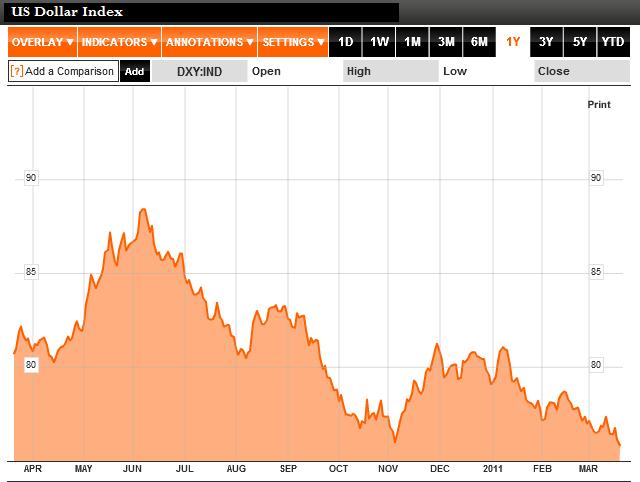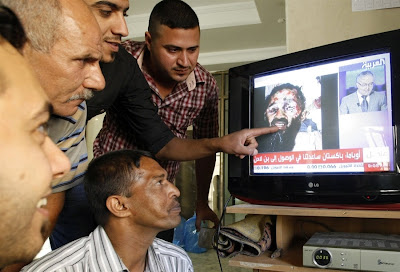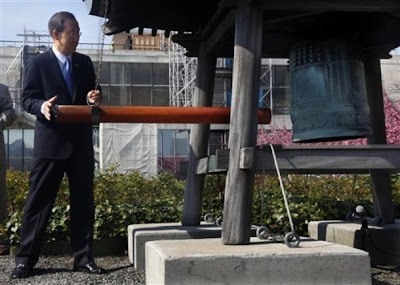The Long Road to Abbottabad
 |
| Details of each operation and the instructions on how to reorganize after success or failure provide fascinating insight into their training and understanding of guerrilla operations. Occasional glimpses of Sun Tzu and Che Guevara's teachings come through. |
GUEST BY SHAUKAT QADIR
(May 02, Islamabad, Sri Lanka Guardian) Al Qaeda took birth in late 1982 (not 1988/89, as usually stated, because 1989 was when it actually acquired the militant traits it is now famous for) in Kuwait, the birthplace of Osama bin Laden’s (its founder; OBL) father, ostensibly as a charitable organization to assist Muslims suffering all over the world. Very quickly, however, OBL realized that the way to ‘help’ oppressed Muslims was to arm them to rebel against the oppressor(s). Since 1989 witnessed the Soviet invasion of Afghanistan and OBL was one source for funneling arms to Afghan freedom fighters, Al Qaeda suddenly began to receive massive funding from all over the Arab World. He also swiftly entered the arena of gun-running.
Many Americans have accused the CIA of training Osama. My view is that the accusation is not merited. However, there is little doubt that he received encouragement, support, funding and even arms for Afghan freedom fighters and that he was a CIA collaborator for some years.
OBL also actively collaborated by providing crucial intelligence obtained from Al Qaeda personnel in Kuwait, during ‘Desert Storm’. However, with continued American presence in Saudi Arabia, post Desert Storm, plus American arrogance demonstrated by their ignorance of, and lack of concern with, local customs and sensitivities were the beginning of the change in him. He began to find Americans offensive and the King (Abdullah) began to be viewed as an American lackey.
OBL began to gravitate towards the small group of dissidents who held the view that a King was un-Islamic and sought a return to the ancient Islamic democracy; the Khilafat. He became increasingly active with the passage of time and, when confronted with it, freely admitted to his activities. Due to his family connections, he was not imprisoned but his citizenship of Saudi Arabia revoked.
It was during his period in Sudan that he began focusing on the US as the object of his enmity. While his anti-US activities are on record, it is significant to note that there was considerable increase in contributions to Al Qaeda, including contributions by members of the royal family of Saud.
It was also in this period that OBL began to develop a strategic ‘world view’. He saw all governments of Muslim majority countries as American lackeys and referred to them as Kafirs (infidel). He began to think of himself as a man with a mission; he was going to bring revolutions in all Muslim countries to revert them into one united Caliphate and, simultaneously bring to its knees that giant of all Evil; the US.
It is important to point out that for any such strategic vision to work, it is essential to have undisputed control over a spatial territory; preferably a country. A nation state governed under strict and ‘true’ Islamic law, setting an example to the rest, a command, control, and communication infrastructure, where funds can flow in, where training can be provided for warriors to sally forth and instigate revolutions in other Muslim majority countries. He was going to be the Muslim Che Guevara. But how?
While he was considering his choice of country, fate took a hand and, without details irrelevant to this narrative, he found himself in Afghanistan for him; the Promised Land
How did Al Qaeda work?
In 1980, OBL offered to join the Afghan freedom struggle, but this was a stage when the Afghan struggle was still ‘pure’, unadulterated by non-Afghan fighters, except the Pashtun from Pakistan. Osama’s contributions in weapons and financial support were welcomed; he was not. Soon he began to realize that his person was too precious to waste. At some stage Abu Ayoub Al-Iraqi, joined Al Qaeda. He remained so far in the background that few know his name and few are aware of his contribution; but it was he who gave the practical shape to Al Qaeda’s role on Osama’s World Vision.
Al Qaeda’s function has been described as “centralized decision and decentralized execution”; I see it as a multi-national that has exported instability so as to create Caliphate(s) in Muslim majority countries through ‘outsourcing’. Al Qaeda has recruited Muslims from all parts of the world and sends out small bands of advisers; these could number from three to a dozen or so. While Osama retained the title of Amir, the leader, and was advised by a council, called Shoora, the real power has been wielded by the second tier leadership, responsible for planning and tasking. The second tier has traditionally been Arab, mostly Egyptians, with one known exception, the Pakistani, Khalid Sheikh Muhammed, credited with the 9/11 attack; but could he have planned it alone?.
9/11 as an example
Many journalists have written about the complications involved in planning this attack. Let us refresh our memory a little. Nineteen individuals from various Arab countries entered the US in four different groups. None of these groups were aware of the others or their role, except the coordinator, who also led one of the groups, Muhammed Atta.
For the attack(s) to create the impact envisioned, without a timely reaction, it was necessary to hijack four aircrafts taking off from different airports. The planes selected, had to take off within a total time interval not exceeding forty five minutes, from the first to the last, to preempt a timely response. For them to cause the destruction to the WTC, Pentagon, and (maybe) the White House, they had to be carrying a certain minimal payload of fuel otherwise the explosion would have been insufficient.
Khalid, the one credited with the 9/11 attack, was a mechanical engineer with a masters from North Carolina. He could certainly have helped work out the fuel payload requirements for the planes that were to turn into aerial bombs, but their flight direction, how far each could deviate from its flight path and for how long, before it would arouse suspicion, the level of training required in flying that would suffice for the hijackers, the kind of weapons that would get through the airport search machines all point to more than one ‘expert’; each one with the requisite knowledge of airport security, of flight schedules, flight paths and patterns, the time taken to arouse suspicion, the delay in scrambling aircrafts to respond to this threat.
There were so many factors to be vectored in for this attack to succeed that it is impossible for it not to have been planned by a group of at least three individuals, perhaps more whose variety of expertise could create the (near) perfect plan.
It is not only a probability but a virtual certainty that they never came together, nor did they provide the information knowing what it was for. They were all probably paid cash to provide bits and pieces from their own area(s) of expertise. And yes, with their help, even Khalid Sheikh could have masterminded the plan, though my gut feeling is still that the mastermind had to be a specialist and a purchasable commodity. But Khalid is claiming sole credit and, therefore, we will never know the truth.
But this isn’t an example of outsourcing! For that, we need to travel to Afghanistan and Pakistan. Examples could also be taken from other Muslim majority countries, but I will confine myself to the area I know.
Afghanistan
1996, when Osama landed in Afghanistan, Taliban was broke and also needed weapons. In early ‘90s, Eric Margolis reported that a kilo of paste fetched the Afghan farmer $ 1000. At Karachi it was worth $ 50,000, offshore New York, $ 250,000 and would be cut and recut to be sold in New York at a street value ranging from 3 to 5 million. Al Qaeda was already into gun running and moving into drug smuggling was no problem. Pakistan was, at that time, a staunch supporter and the CIA was also prepared to turn a blind eye, the US still had hopes of Taliban and UNOCAL with George H. W. Bush on its board was still investing in Taliban in hope of oil from Central Asia.
And so, Osama offered Taliban 50 per cent of the profits from drug smuggling and weapons at near cost price. Mullah Omer could not look a gift horse of this kind, in the mouth. In return, Osama got the country he had been craving for, an unchallenged base for Al Qaeda operations, and the country where stringent Islam would be practiced in letter and spirit, as a shining example for Muslim majority countries.
9/11 changed everything. Suddenly Pakistan became a US supporter, a US invasion was imminent and, when it came, Taliban, Osama, and Al Qaeda were on the run.
It might be of interest to draw the reader’s attention to some less well known facts. Post 9/11, the US demanded that Taliban hand over Osama, the Taliban reportedly refused, because when they asked the US to provide concrete evidence of Osama’s guilt, the US refused. The US refused, because there was no concrete evidence of his guilt. There never can be. Although Osama, in a video released to Al-Jazeera TV accepted responsibility for this attack, but that was in the future; and the video was never authenticated either, so no one is certain of his guilt.
Such operations are ordered through numerous cut-offs and conduits and if any of the hijackers had been captured alive, he certainly could not have gone beyond the curtain of Khalid Sheikh and Khalid has never pointed the finger at Osama. He claims sole responsibility. Most of the FBI and CIA knowledge of the functioning of Al Qaeda has come courtesy Jamal Al Fadl, a Sudanese who defected from Al Qaeda after embezzling $110,000, which he confessed before a court in the US. How much credence can be given to his testimony, is for the reader to judge
There were selective portions of al-Fadl's testimony that I believe was false, to help support the picture that he helped the Americans join together. I think he lied in a number of specific testimony about a unified image of what this organization was. It made al-Qaeda the new Mafia or the new Communists. It made them identifiable as a group and therefore made it easier to prosecute any person associated with al-Qaeda for any acts or statements made by bin Laden.[26]
What has gone virtually unreported is the fact that on a suggestion by a Pakistani official, Taliban agreed to hand over Osama to Saudi Arabia, but the King refused to accept him. The Taliban might even have agreed to hand him over to the International Criminal Court, but when the ‘war-time’ vacuous US president Bush was informed of the option, he just ordered the charge.
For the initial years Musharaf continued to play both sides against the middle but the US was pressing hard and something had to give. Periodically, he would throw the US a bone to keep them off his back for a while. One such ‘bone’ for the US was the murder of Nek Muhammed in 2004, a member of the Wazir tribe, a veteran of the anti-Soviet war, who rose to prominence as a leader of his tribesmen amongst the Afghan Freedom Fighters, fighting once again to reclaim their country from another army of occupation, their erstwhile ally, the US. (Those readers interested in what happened in Pakistan can look up “Understanding the insurgency in FATA” under ‘selected articles’ on www,shaukatqadir.info.
This turned out to be disastrous and instigated the revolt in our tribal areas. However, it was not till Musharaf, bedeviled by another self-created judicial crisis by filing a reference against the Chief Justice, which was unanimously rejected by the Supreme Court, created another crisis to divert the attention of the international community; the ‘Lal Masjid’ (Red Mosque) episode in Islamabad in 2007, when Osama announced that, “Al Qaeda’s enemy number one was no longer the US; it was now Pakistan”.
By this time, Afghan Freedom Fighters had embraced the title of Taliban. Forgetting the oppression they had suffered in the last years of the Taliban, Taliban became the symbol of the Muslim David to the American Goliath; however, Taliban had divided into numerous factions; all loosely linked to Al Qaeda but not fully subservient to the so-called ‘mother’ organization.
Consequently, without going into details of the causes, only two Pakistani factions of the Taliban; Maulana Fazlullah’s in Swat and Baitullah Mahsud’s in South Waziristan responded to Osama’s call, while none of the Afghan Taliban did.
Since Swat shared no borders with Afghanistan, it was South Waziristan that became the base for Al Qaeda’s anti-Pakistan operations; though Fazlullah also received considerable support since, if the area under Al Qaeda could extend to the boundaries of Swat, they would be virtually within spitting distance of Islamabad.
This is where the example of ‘outsourcing’ begins!
Anticipating that Afghan Taliban might not be tied to his apron strings after witnessing how their Afghan brethren turned against them for obeying Osama’s Islamic injunctions, Osama was looking at a home in Pakistan, preparatory to taking it over; the only Muslim nuclear capable country in Osama’s lap, what a prize to aspire to!
Very carefully, under the skillful guidance of Ayman Al Zwahiri (in all likelihood, Ayoub Al-Iraqi remains the strategic brain of the organization, while Zwahiri has assumed operational control), roles were divided between the two Pakistani factions. To Fazlullah, closer to Islamabad fell the task of guerrilla warfare. To this end, a team of ten, under a Jordanian known only as Jabber was dispatched to Swat and over 1000 Tajik and Uzbek veterans followed as reinforcements.
Baitullah formed the base camp. This was the operating HQ, the command, communication, and control center, the safe haven through which monies, weapons, and explosives flowed, and the training area for acts of terrorism. Volunteers, usually young students of Madrassas (seminaries) were indoctrinated and brought here for training, many of them from as far as Southern Punjab. To Baitullah were dispatched twenty advisers, the leader’s name remains a mystery, though he is described as a tall, educated Arab, with a towering personality.
It was soon discovered that the Al Qaeda representation in Baitullah’s region was overkill. Baitullah was the astute leader but he was ably assisted by three very capable henchmen; Qari Raees, Hakeemullah (who later succeeded him), and Waheed. Very soon these three had divided responsibilities of different training camps, and administration, indoctrination as well as recruitment. The leader of the Al Qaeda advisers left after six months or so, and left behind three representatives for advice on tricky operations.
Baitullah was a wily individual who is reputed to always hedge his bets. Among the Mahsuds, his tribesmen, he was reputed to be a CIA agent. They offer the following facts as evidence: a) he had far more ready cash in dollars than any other, but this is inconclusive; b) that he had very sophisticated communication equipment---a question mark; c) that for many months the US drones would hit only those Mahsud militants who operated against the US in Afghanistan and opposed Baitullah’s decision to attack Pakistan; and that those hit by drones had invariable been visited by Baitullah on a pacifying mission (these stupid tribesmen aren’t that stupid, even they know about homing devices). Finally, the ISI had, on numerous occasions provided accurate actionable intelligence on Baitullah to the CIA requesting a hit, which never materialized. Until finally, he outlived his usefulness and was wiped out, long with his wife, by a drone.
When the Pakistan army recaptured Swat from Fazlullah they captured diaries of some Taliban leaders; among them was a diary of Muslim Khan, the spokesman for Fazlullah, the leader of the Taliban in Swat. I managed to lay my hands on some of them, including a diary of someone who styled himself as "Khalid bin al Walid" - an obvious pseudonym. While most of the diaries typically related the events of the day, a portion of each diary was dedicated as a training manual. And this is what made them so interesting. The diaries contain detailed instructions on how to conduct urban and rural guerrilla warfare. They included instructions on carrying out an ambush, how to evade one if possible and how to fight through one. They listed combatants under loose command structures for certain operations. The diaries included analyses of the successes and failures of operations, with notes on the casualties taken and inflicted. They record why a commander has been changed, occasionally for his inefficiency, but more frequently to find the most appropriate individual for each task.
Details of each operation and the instructions on how to reorganize after success or failure provide fascinating insight into their training and understanding of guerrilla operations. Occasional glimpses of Sun Tzu and Che Guevara's teachings come through. But what the diaries resemble most are the "training manuals" captured from the rebel Contras that Nicaragua took before the International Court of Justice to present its case against the US.
While fascinating, the diaries might not be a cause for surprise; except to wonder how they received such detailed training. The remaining instructions contained in the diaries of leaders as well as "soldiers" is certainly cause for concern. These instructions are exquisite in their detail on how to make explosive devices; many with the most innocuous components like sugar, cooking oil, aluminium, Vaseline, coffee, charcoal, salt and even black seed. In each case, other explosive components are included and in each case all composites are spelt out in milligrams - frequently with diagrams. Instructions on the use of TNT, RDX, and plastique are also included with a ratio for each component.
Instructions also detail how improvised explosive devices (IEDs) can be triggered; methods range from conventional fuses to improvised ones from rope soaked in fuel, to those made from a hand-wound wrist watch, an alarm clock and even a mobile phone. Instructions also include which devices can be used for which type of IED. They include how charges can be shaped for maximizing effect in a given direction and even instructions on biological precautions if there is prolonged exposure to certain chemicals - when to drink a glass of milk or a quart of yogurt. Needless to say, instructions also include details on the sensitivity of each kind of IED, what might trigger each prematurely and its lifespan. Everything necessary has been covered in the minutest detail imaginable, many of which were unknown to me until I read the diaries.
While all this information is available on the internet, it requires a specialist to understand and synthesize it. Often the diaries necessitate knowledge of chemistry, physics and biology and a combination of that knowledge would be developed for a specific purposes: training people to operate behind enemy lines and make do with whatever is available. Such information could also be gathered by a scientist in the pay of an organization like al Qa'eda. But even a chemist would need to be pointed in the right direction to collect the relevant information on physics and biology. This information had to come from an intelligence agency.
Similar material was recovered from South Waziristan, though in far lesser quantity, since the Mahsuds managed to escape across the Durand Line in far greater numbers. All captured Taliban from both areas tell the same story: “These were brought by a handful of people from Afghanistan (Al Qaeda advisers), photocopied and distributed to us. Our day started with a recitation of the Holy Quran and was followed by a two hour training session in combat and weapons. The rest of the day we studied these books (training manuals) and practiced them as well.”
I am certain that CIA has been guilty of many dubious acts and I have frequently accused them of such acts. However, it is my considered opinion that the CIA would, under no circumstances release such documents to a terrorist organization. There are, however, numerous ex-CIA Black Ops personnel sitting unemployed who might be for sale. There are also ex-CIA Black Ops operatives employed by Private Security Agencies like Xe. And Xe is for sale to the highest bidder. Take your pick!
How relevant is Al Qaeda today and in the future?
It seems however, that events in the Arab countries have overtaken us. The fire is spreading and, while it can be suppressed by force but only for a breathing space. It seems that Arab peoples want their freedom and their own brand of representative government; which might not be the Anglo-Saxon democracy but one that suits their psyche.
With this storm rising, there appears to be a growing concern in the west and particularly in the US that this will give birth to Islamic extremism. After years of accusing Pakistan of harboring Al Qaeda (only months ago, Ms. Clinton made another damning accusation while in Islamabad), we now hear that it is back in force in Yemen, Bahrain, and Iraq! Only on Iraq, I must point out that, while Saddam was a Sunni despot, there was never any question of Al Qaeda taking root there during his rule. It is there indeed, but only post the US invasion.
Numerous other fears are being expressed in relation to the gathering storm among Arab nations: it could fuel a sectarian war; it could give birth to Islamic extremism, and most of all, where would our flow of oil come from?
All these apprehensions have some grains of possibility. It is entirely possible that Islamists could take over. It is also possible that Iran, watching all this with hungry eyes might grab an opportunity that could trigger sectarian strife all over the Arab turbulent region. And any turbulence will hinder the flow of oil, though not for long. Oil is their sole source of income.
However, in my view, if there is a real fear of an Islamists takeover, it is confined to Saudi Arabia; which is why King Abdullah has ordered an immediate intervention in Bahrain and is pleading with Jordan to turn down demands for reform to a democratic kingdom. Saudi Arabia has hordes of OBLs still in hiding!
In this emerging scenario, how relevant is Al Qaeda? After all, its raison d’etre was based on two premises: that the present governments in all Muslim countries, beginning with Arabs are un-Islamic/oppressive and that they are pro-US. The revolution(s) sweeping across Arabia and Africa are based on the same reasons and, whichever form of government emerges in each country; Islamic or some form of representative democracy, it is certainly not going to be opening doors to Al Qaeda.
Our Taliban in Pakistan will make us sweat for some years yet and, if (rather when) reformation finally does sweep across the region, there might be a reformative revolution in Pakistan as well.
It seemed to me that even before Osama’s elimination, Al Qaeda has been in its dying throes; because of forces beyond its control. All the more reason then, for the US to pack up and quit Afghanistan. Their basic apprehension that a Taliban return in Afghanistan might herald the return of Al Qaeda seems to have disappeared. Other ghosts and specters now loom on the American horizon. Time to go chase them!
Shaukat Qadir is a retired brigadier and a former president of the Islamabad Policy Research Institute. He can be reached at shaukatq@gmail.com
![[kawashima_umika_05_01-731756.jpg]](http://1.bp.blogspot.com/_m4RDUTWIuMI/S3xz4zS_s4I/AAAAAAAAnR0/NAIRZIOLLwE/s000/kawashima_umika_05_01-731756.jpg)
![[kawashima_umika_05_01-731756.jpg]](http://1.bp.blogspot.com/_m4RDUTWIuMI/S3xz4zS_s4I/AAAAAAAAnR0/NAIRZIOLLwE/s100/kawashima_umika_05_01-731756.jpg)






















